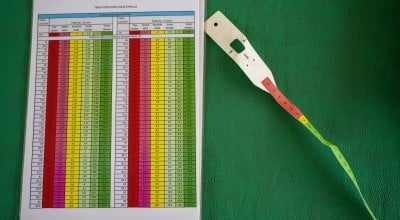
Knowledge Hub
In 2015, leaders from 193 different countries agreed 17 global goals they felt the world needed to achieve by 2030. The first of these goals is about ending poverty in all its forms everywhere.
What is the definition of poverty and how is it measured?
The definition of poverty in the English Oxford Dictionary is ‘the state of being extremely poor’. But what does it mean to be extremely poor?
The poverty line
Poverty is measured using the international poverty line, which is a universal standard. It indicates the amount of income required to provide essential resources for survival. Since 2017, the World Bank's new international poverty line was set at $2.15 per person per day.
People living below this line are considered to be living in extreme poverty. The UN states that while progress has been made in cutting global poverty since 2000, around 719 million people are living on less than $2.15 per day.
Relative poverty
However, from country to country, the cost of living differs. Therefore, the poverty threshold differs too. This is known as relative poverty, which is understood as people who lack the minimum amount of income needed in order to maintain the average standard of living in the society in which they live. Relative poverty is often the easiest way to measure the level of poverty in an individual country.
While income-based measures of poverty like the above are useful, they are often insufficient to capture the depth, duration and nature of poverty.
Our understanding of extreme poverty
At Concern, we believe there are three dimensions to extreme poverty:
1. Lack of and/or low return on basic assets
2. Inequality
3. Risk and vulnerability
We define extreme poverty as the lack of basic assets and/or the low return to these assets.
Assets can be financial, natural, human, physical, social and political, ranging from cash, property and land to education, good health and friends. Extremely poor people prioritise financial, natural, human and physical assets, such as cash, property and land. From the perspective of those living in extreme poverty, it is often only once shortages in these basic assets are resolved that there is an opportunity to acknowledge that social and political assets need to be secured and strengthened to address the root causes of poverty.
What are the causes of poverty?
Concern recognises two key aspects that capture extreme poverty’s principle causes, maintainers and obstacles. These are:
- Inequality
- Risk and Vulnerability
Inequality
Often, people living in extreme poverty are not recognised as equals in society and experience discrimination, stigmatisation and exclusion. As a result, people lack representation, power and status, which prevents them from claiming their rights and denies them the opportunities and resources to improve their lives.
Gender inequality, in particular, is a consistent feature of extreme poverty and remains a major obstacle to the abolition of poverty. Without attempting to address the effects of inequality on the lives of the extreme poor, attempts to eradicate poverty may only bring about short-term change.
That’s why our work not only acknowledges the differences which exist between people and hence the different support and resources that each person requires but also empowers people living in extreme poverty to improve their lives.
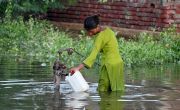

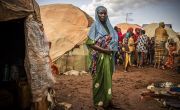


Risk and vulnerability
The people we work with face considerable levels of risk and vulnerability.
Many of the countries Concern works in are experiencing or recovering from conflict; have weak, under-resourced systems of governance; and suffer from inappropriate and unsustainable policies. In addition, most of the people we work with live in areas that are prone to recurrent floods, droughts, tropical storms, earthquakes, landslides and crop pests and are vulnerable to diseases. Economic crises, high food prices and climate change are already, and are expected to continue, to impact on the poorest most and increase their risk and vulnerability to other shocks and stresses.
This level of risk, if left unchecked, is a significant cause of poverty and a considerable obstacle in efforts to help lift people out of poverty.
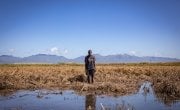
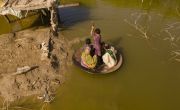

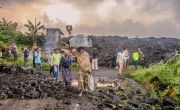
Vulnerability describes people’s level of susceptibility and exposure to the negative effects of hazards and their impacts. The level of vulnerability of an individual or group is determined by their ability to anticipate, cope with, respond to, and recover. Key factors contributing to people’s vulnerability can include:
- The social, political, economic, security, and environmental context in which people live
- Their economic status, skills and experience, gender, age, disability, and ethnicity
- The levels of marginalisation they experience
- The location of where they live and pursue their livelihoods
The more vulnerable someone is to a hazard and its impacts, the greater the risk that hazard poses to their life and livelihood
What does extreme poverty look like?
- When a family has to skip more and more meals in a day because they just have no other option;
- Having to eat just maize/potato/other starch for every single meal to fill your stomach, because you cannot grow or afford to diversify your diet, and often having to dilute this with lots of water as well (which may not even be clean);
- when families are forced to sell their productive assets such as livestock or land to be able to afford their next meal;
- when a household lives miles away from a health centre with no means of getting to it if and when they or their children fall ill and when they have no means to even the most basic healthcare services;
- when basic clean water for drinking or cooking is unavailable and inaccessible – frequently putting lives at risk of infection and malnutrition;
- having to live in temporary shelters made with whatever material is available in the vicinity – mud, sticks, plastics, tin; but always at risk of this being destroyed when the next climate or human-made shock strikes; and having to start from scratch all over again;
- When proper electricity (even one lightbulb for the whole household) is outside of your reach
Can we end poverty?
The world has taken huge steps towards ending extreme poverty over the past two decades, but the pace has slowed, and the world is not on track to achieving the target of ending poverty by 2030. However, more than one billion people have lifted themselves out of poverty over the past 25 years so we know that poverty can be tackled.
Extreme poverty cannot be solved by simply providing basic assets. In order to combat extreme poverty, the causes, maintainers and obstacles that prevent people from escaping extreme poverty also need to be considered. If this doesn’t happen people can’t escape the poverty trap.
All of the work that happens at Concern is aimed towards the goal of making extreme poverty a thing of the past, but it’s not over yet. We know what’s needed and we will continue to work towards ending extreme poverty, whatever it takes. But no matter what we do, there’s one thing that will certainly make it a success: you.
Join us in ending extreme poverty, whatever it takes
How your donation is used
85.4%
Overseas programmes
85 pence in every pound donated goes towards our emergency response and long-term development programmes, working together with people living in the most difficult situations to bring about lasting change to lives, livelihoods and communities.
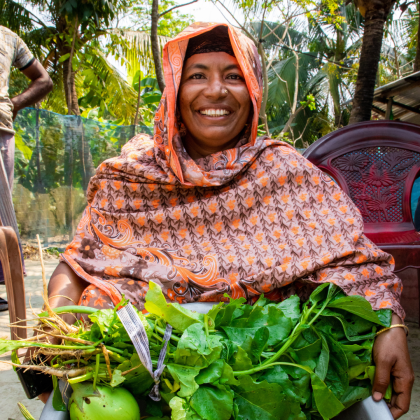
11.8%
Fundraising
This is money we spend to raise more funds for our overseas work.
2.6%
Policy, advocacy and campaigns
We invest money to campaign, lobby governments, run petitions and put pressure on decision-makers to tackle the underlying causes of extreme poverty and push for change.
0.2%
Governance
These are funds we spend to ensure that Concern is compliant and adheres to the highest standards.




